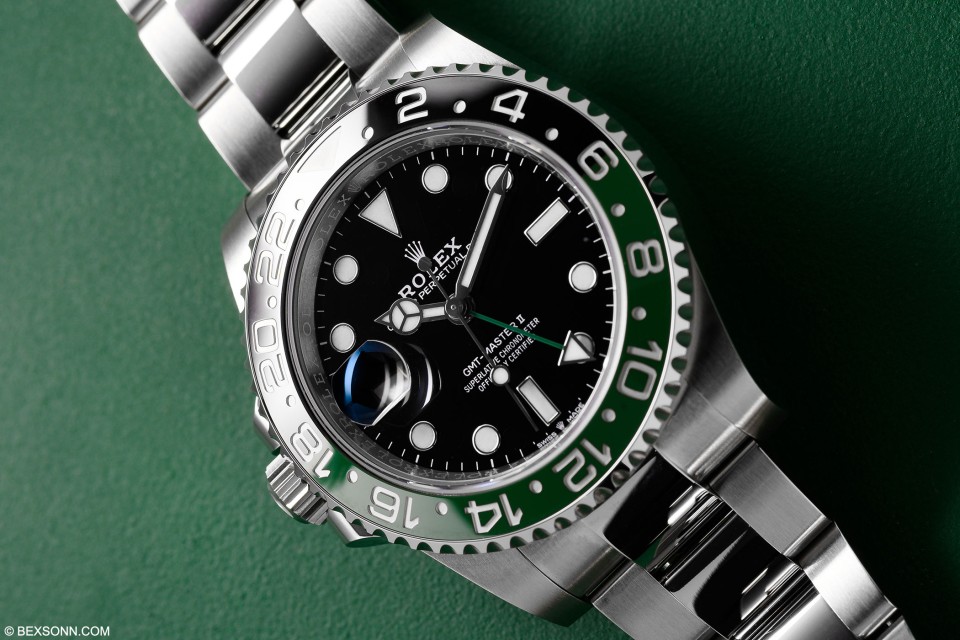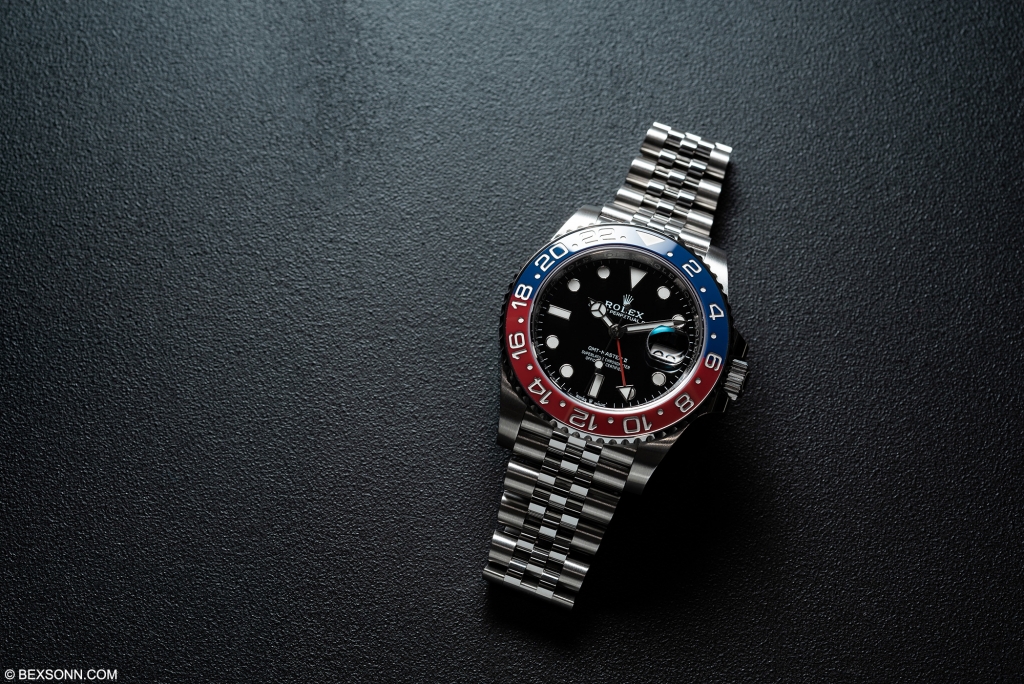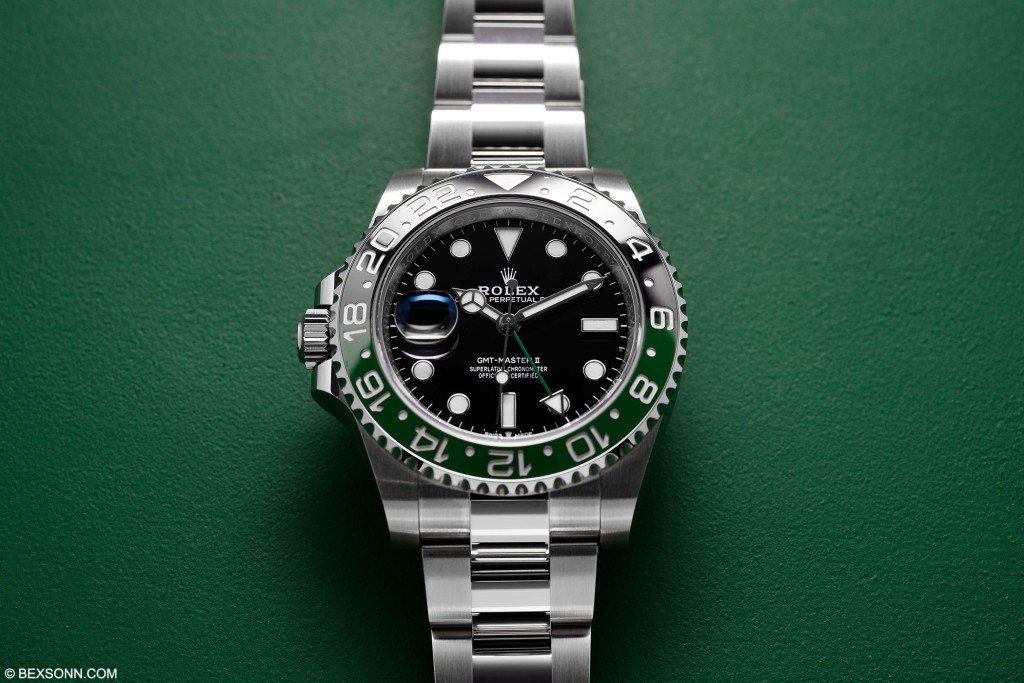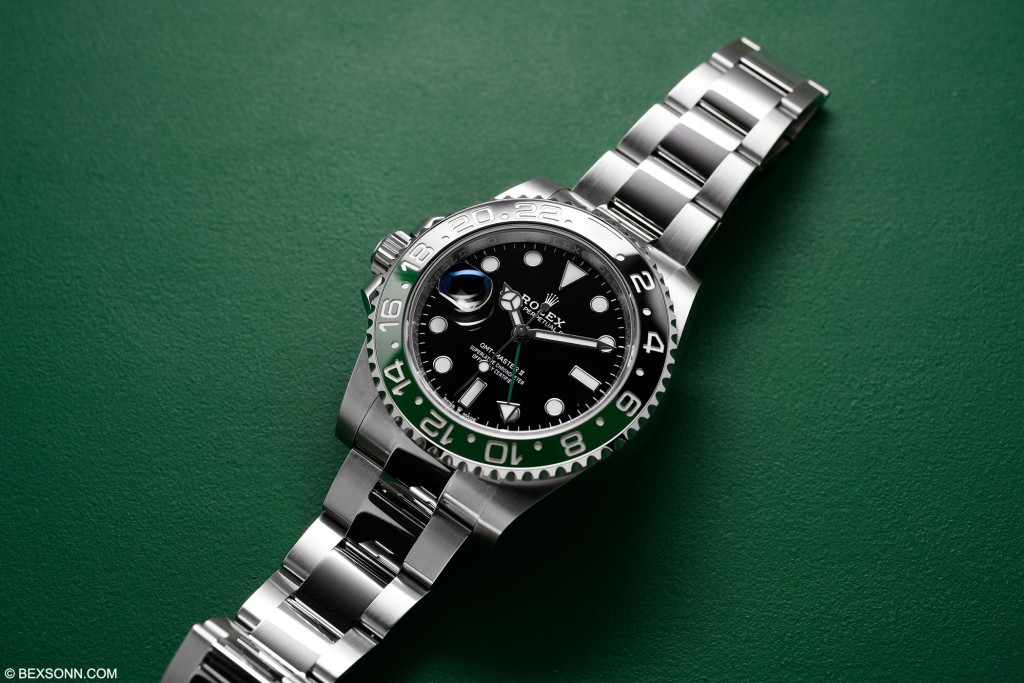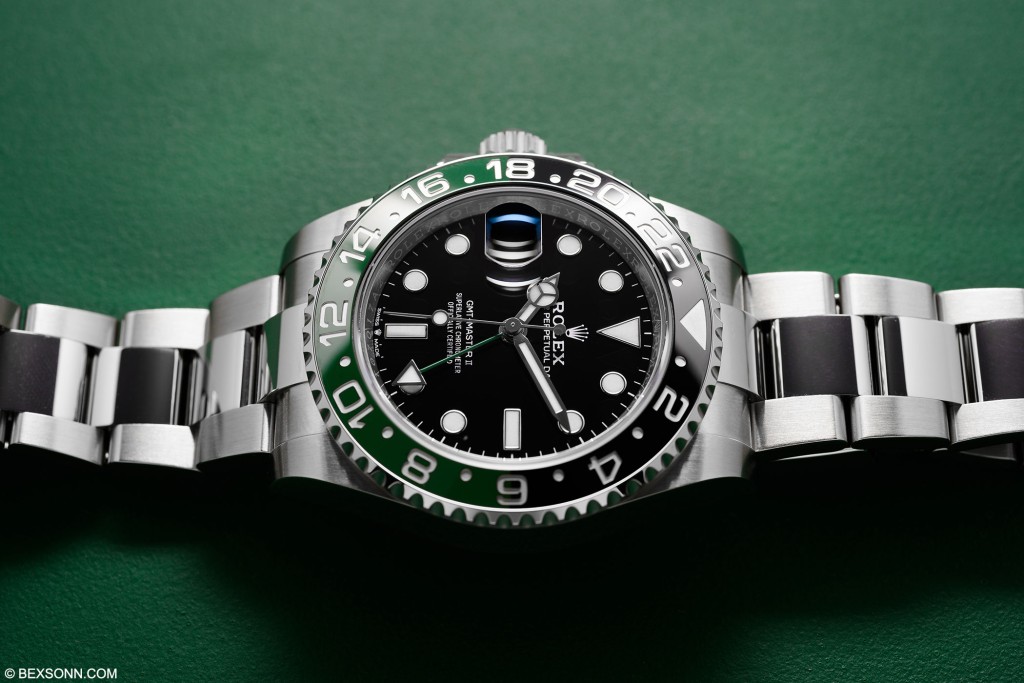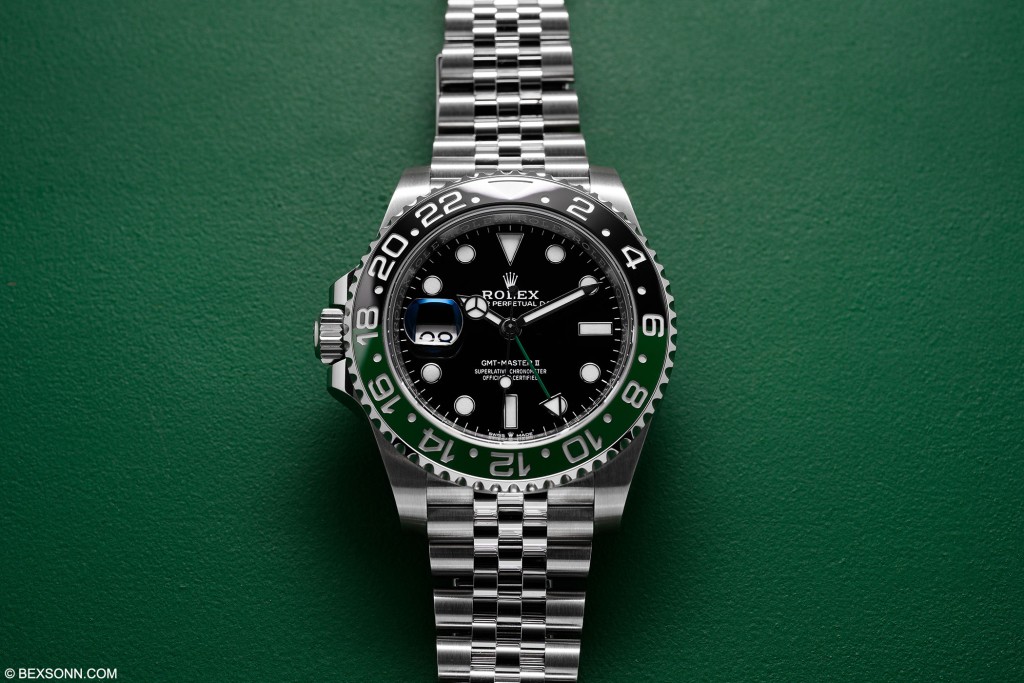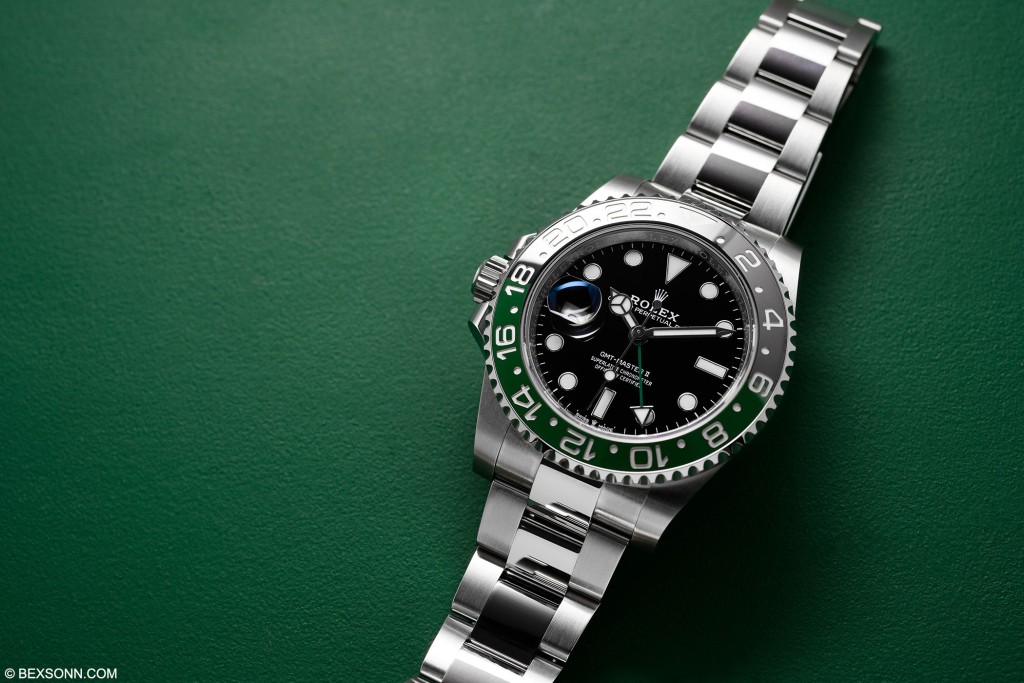Back in 2014, Rolex introduced the GMT-Master with a Pepsi bezel. Needless to say, Rolex aficionados and collectors alike greeted it with some scepticism and in all honesty, it was pretty understandable. You see, they didn’t just produce a new bezel for the models that already existed, no. Rolex made the new Pepsi GMT-Master entirely out of white-gold, making it one of their most expensive, mass produced, sports timepieces. Four years later they finally made it out of stainless steel – which massively appealed to the masses. Fast-forward to 2022 and Rolex introduced perhaps there most off-piste wristwatch in quite some time.

You see, when Rolex introduced the Cerachrom bezel, this put a stop to the two-toned bezels but only for a few years and not only this, the aluminium bezels that came on early GMT-Masters were prone to fading. In 2011 Rolex introduced the first two-toned GMT-Master II, reference 116710BLNR (Bleu Noir), this instantly got people speculating about the return of the Pepsi. In 2014, everybody’s wishes came true with the reference 116719BLRO (Bleu Rouge) but as mentioned, due to the case being made of solid 18-carat white-gold, the thought of owning one only became a reality for some.
With the advent of smartphones, there is certainly argument that watches, especially mechanical ones, are simply obsolete and of no real use to everyday life. That being said, I have always maintained that there is one complication that remains relevant and useful- the GMT or two time zone watch. A wristwatch that displays two time zones, it is much faster to read than if one were to pull out your phone. Just a flick of the wrist and a glance, and you can immediately tell what time it is at home while travelling, whereas with phones, you always have to pull out your phone, unlock it and click around before arriving at the international time section. This is exactly why, ladies and gentlemen, I believe that the GMT-Master by Rolex is one of the best watches on the market today.
In 2018, Rolex did a major revamp to their GMT line with three new introductions. Of course, as everyone knows by now, the one that stole the limelight, was the stainless steel GMT-Master that finally came with a ‘Pepsi’ Cerachrom bezel. However, what we’re looking at today is perhaps something no one saw coming. A polarising model, a left-handed or otherwise known in the watch collecting community as Destro GMT-Master II with a black and green bezel.
The new stainless-steel GMT-Master II 126720VTNR, just like its predecessors has a 40mm case but of course sports Rolex newer style thicker lugs, which makes the watch appear larger than it actually is. As per usual the case is waterproof to a depth of 100m but one of the main talking points of this release is the fact that Rolex have chosen to place the the crown and crown guard are on the left side of the watch case. This required changing the precision testing process for some of the final controls carried out as part of the Superlative Chronometer certification. The date aperture and the Cyclops lens have also moved and appear at 9 o’clock.
The GMT Master line has seen two iterations of its two-tone Cerachrom bezel, with the blue and black ‘Batman’ being the first release several years ago. Shortly after that, Rolex finally released the blue and red ‘Pepsi’ version, but to many people’s disappointment, it was housed in a white gold case rather than everyone’s desired stainless steel. That said, a few years later a stainless-steel version was made available with a ‘Pepsi’ style bezel as already mentioned. This year, Rolex have taken this a little further and added a green & black bezel, which is not only eye-catching but completely unconventional from the brand that wears the crown.
One aspect that is very nice straight away is the face that this new left-handed GMT Master II is available on either an Oyster or Jubilee bracelet, something that wasn’t instantly available when the steel “Pepsi” GMT was released. It has polished centre links and brushed outer links, on both versions. It has Rolex’s Easylink function which ingeniously allows for up to 5mm of easy adjustment on the bracelet and all in all is insanely well made.
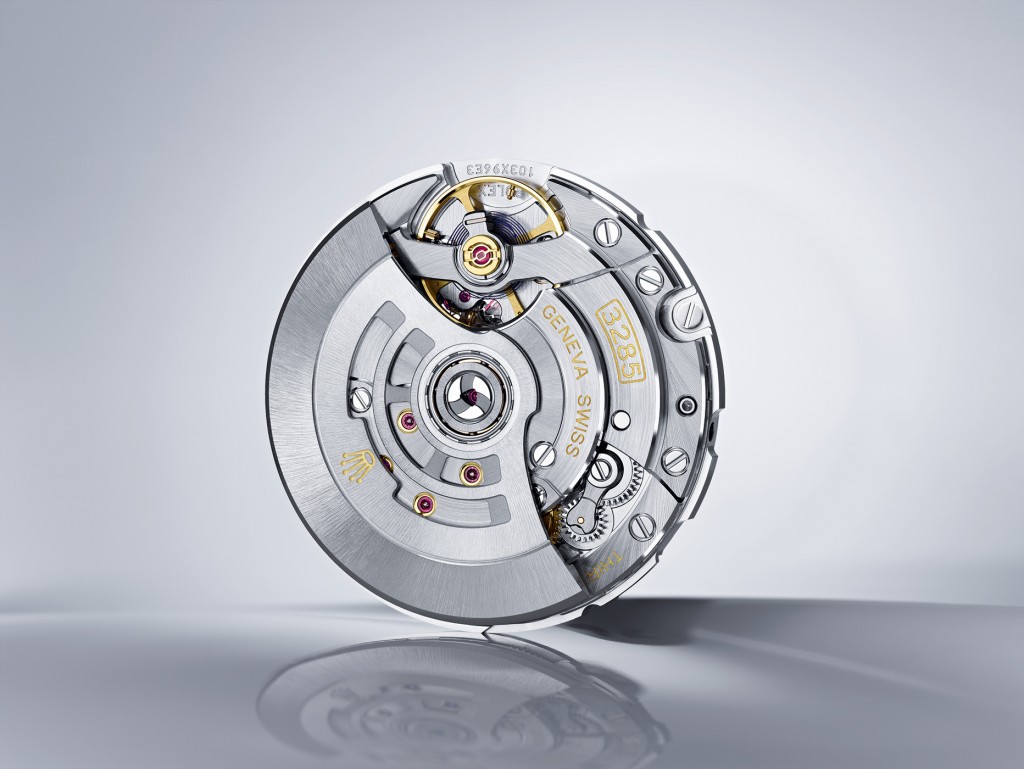
Inside this new left-handed GMT-Master II, Rolex have deployed the new in-house developed and manufactured 3285 calibre movement. This new-generation movement, manufactured by Rolex, has no less than 10 patent applications filed over the course of its development, this self-winding mechanical movement demonstrates Rolex strive for perfection. The calibre 3285 offers fundamental gains in terms of precision, power reserve, resistance to shocks and magnetic fields, as well as convenience and reliability. It incorporates the Chronergy escapement patented by Rolex, which combines high energy efficiency with great dependability. Made of nickel-phosphorus, this escapement is also insensitive to magnetic interference. Thanks to its new barrel architecture and its super-efficient escapement, the power reserve of calibre 3285 extends to approximately 70 hours. All in all, it comes in line with the manufactures ‘Superlative Chronometer’ standard, with a deviation of +/- 2 seconds per day.
Naturally the movement allows the wearer to easily set the 24-hour hand to a second time zone, as it is independent from the normal hour hand. This of course is nothing new and has always been possible in the GMT-Master II’s but for those who are unaware, this was never possible in the GMT-Master and required the wearer to rotate the bezel to indicate a second time zone. Furthermore, Rolex have added a subtle detail that signifies it makes use of the new calibre. Instead of the wording “Swiss Made” at 6 o’clock, you’ll notice a little coronet, which is flanked by words “Swiss” and “Made”.
As you’ve probably heard me mention before, the two-tone Cerachrom insert for the bi-directional bezel goes through a rather interesting process. Rolex have patented, manufactured, and developed a process for creating said bezel. Now, you may have thought that making a “Sprite” bezel is just a case of fusing green and black Cerachrom together, right? No. You see, Cerachrom as brilliant as it is for maintaining its colour over the years has inherent brittleness. Taking two different coloured pieces and fusing them together would make the Cerachrom bezel weaker and reliving the days of the Bakelite bezel is something, I’m sure, neither Rolex nor their owners want to do.
What Rolex had to do is to come up with a way of making the Cerachrom bezel out of one solid piece. Rolex do this by creating a green ceramic bezel inlay, which is an achievement in itself, according to Rolex it is very difficult to create a stable green mineral pigment. Half of the insert is then impregnated with a chemical compound to change the green to black. Each grain of the bezel is changed using this technique but the colour transformation from green to black only takes place when the bezel is baked to harden it. The 24-hour scale is then engraved in the ceramic and then coated with platinum via a PVD process. You could be forgiven for thinking that producing a green and black ceramic bezel would’ve been a lot easier but as with everything, it has to be done the “Rolex Way”.
FINAL THOUGHTS
I think I can quite honestly say no one was expecting this new GMT Master II from Rolex and I’m not quite sure if this is a good thing or bad thing, that remains to be seen. But what I can say is that it’s most certainly different and most definitely un-Rolex like. This novel unveiling is an unexpected surprise and I’m sure one that will polarise opinions but one thing that people can’t say is Rolex aren’t daring enough.
The Rolex GMT-Master II Ref. 126720VTNR is available on either an Oyster or Jubilee bracelet and is priced at £8,800 or £9,000 respectively. More information is available rolex.com.
